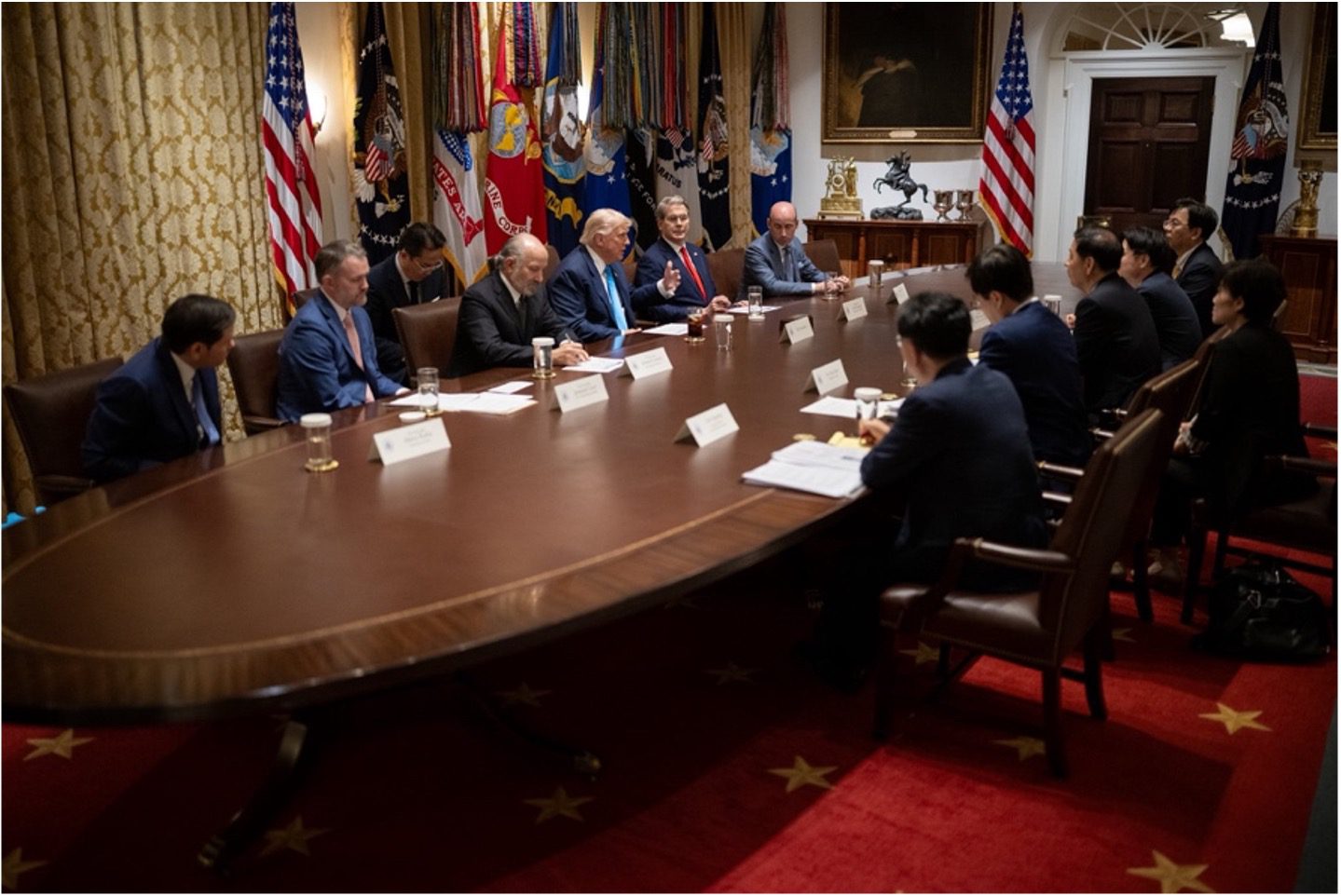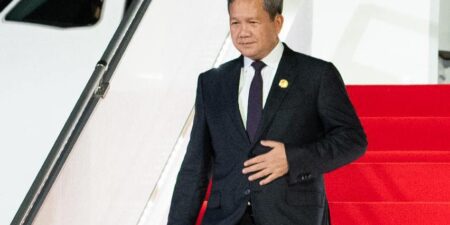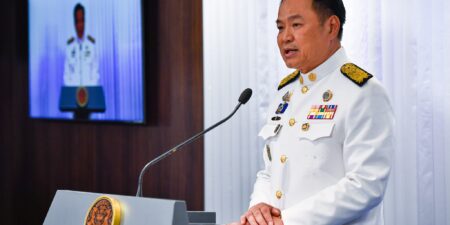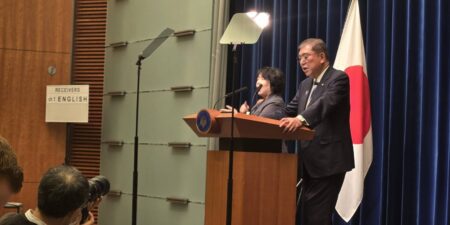
Indo-Pacific Reassesses Trade Exposure to US Tariffs

U.S. President Donald Trump’s “reciprocal tariffs” have had uneven effects across Indo-Pacific economies despite the uniformity of some headline tariff rates. This disparity stems from differences in export composition, the share of exports destined for the United States and the extent to which specific sectors are covered by the tariffs. For example, countries with a large share of electronics, pharmaceuticals or energy exports may see a more limited impact due to existing exemptions or preferential treatment under recently announced agreements. On the other hand, economies heavily reliant on sectors like textiles, steel or auto parts will potentially face greater trade disruptions. Therefore, the burden on countries facing the same rate will vary depending on how much of their export portfolio falls under the tariff regime.
Adding to the complexity are temporary exemptions and pending determinations under Section 232, which have shielded certain sectors from immediate tariff exposure. Section 232 tariffs cover designated categories, including 50 percent duties on steel and aluminum, 25 percent on autos and parts and 50 percent on semi-finished copper and copper-intensive products. A Section 232 investigation of wind turbines and their component parts was launched August 13. While announcements have been made for tariffs on certain sectors such as pharmaceuticals and semiconductors, there has been no further information on implementation, creating uncertainty for exporters and policymakers alike. The strategic implications, depending on how many further changes there will be, could be significant as countries reassess their trade dependencies and negotiate new terms with the United States.
BGA’s tariff tracker aims to provide clients with timely, country-specific insights into the evolving trade landscape, even as many Indo-Pacific countries are still in the process of finalizing agreements and clarifying the scope of tariff coverage. This latest tariff tracker highlights the macroeconomic trends and sectoral nuances that are shaping the region’s response to U.S. trade policy.
Australia

Managing Director
BGA Australia
Most goods originating in Australia and imported into the United States are subject to a 10 percent tariff. The share of Australia’s exports that are directly exposed to these higher U.S. tariffs is small. Total exports to the United States account for around 6 percent of Australia’s total gross exports and around 1.5 percent of GDP. Some goods are exempt, such as gold and selected pharmaceuticals, while others are subject to higher sectoral tariffs, such as steel and aluminum. The tariffs impact approximately 75 percent of Australia’s exports to the United States by value.
Beef is Australia’s top export to the United States (US$2.2 billion and 15.1 percent of total exports by value), followed by gold ($1.1 billion and 7.8 percent); confidential exports, such as intellectual property, ($1.1 billion and 7.7 percent); pharmaceutical products ($1 billion and 7.4 per cent); and meat, excluding beef ($980 million and 6.9 percent). The United States is Australia’s top export destination for steel exports (14 percent of total value of steel exports, or $336 million).
For aluminum, the United States is Australia’s 18th largest trading partner (2.3 percent of the total value of aluminum exports, or $390 million).
Trade Minister Don Farrell said August 1 that Australia’s 10 percent tariff was a “vindication” of the government’s diplomacy with the Trump administration and that it was a comparative win for Australia. A week earlier, the Australian government lifted a ban on U.S. beef raised in Mexico and Canada but slaughtered in the United States. U.S. demand for Australian beef remains strong; however, Australia’s pharmaceutical industry is concerned that it will be hit with tariffs. U.S. pharmaceutical lobby group PhRMA has asked the Trump administration to push for changes to Australia’s Pharmaceutical Benefits Scheme. PhRMA claims Australia’s price reductions and “restrictive subsidy caps” undermine investment in innovation.
Cambodia

Managing Director
BGA Cambodia
The U.S. Trade Representative Office announced a revision to Cambodia’s tariff to 19 percent August 1. This decision followed an agreed ceasefire between Cambodia and Thailand, which was mediated by President Donald Trump.
Cambodia expressed a strong commitment to building positive trade relations with the United States, including a plan to purchase up to 10 Boeing 737 MAX aircraft, with an expected delivery in 2031 and an option for 10 more. Cambodia also plans to implement a zero percent customs tariff on goods originating from the United States.
The reduction in tariff rates offers significant relief to Cambodia’s garment, footwear and travel goods sectors, which heavily rely on the U.S. market. Despite the effective implementation of the 19 percent tariff, an official agreement has not yet been finalized, and the measure currently stands as an executive order. Like other countries, Cambodia continues its negotiations with the United States.
In the first half of this year, Cambodia exported approximately $5.5 billion to the United States, its largest export market — up 25.6 percent year on year. However, third-quarter exports are expected to decline due to uncertainty from the earlier 49 percent and 36 percent tariffs against Cambodia announced in April and July, respectively. The fourth quarter is projected to regain momentum following the implementation of the 19 percent tariff effective August 7, although the actual impact has yet to be assessed.
The United States remains Cambodia’s top export destination, accounting for 37.9 percent of total exports, followed by Vietnam (13.8 percent), China (6.7 percent) and Japan (5.4 percent). Key exports to the United States include garments, travel goods and footwear.
Washington has imposed Section 301 tariffs of up to 3,521 percent on Cambodian solar panel imports. Noncooperative companies during the investigation were hit hardest. Despite the steep rates, the impact on Cambodia’s economy is expected to be minimal.
China

Adviser
BGA China
U.S.-China trade negotiations remain active under a temporary pause — expiring 90 days from August 11 — on new “reciprocal tariff” increases. The pause is tied to Beijing’s limited suspension of certain rare-earth export restrictions, framed by both sides as reversible measures. Washington has made clear that any future tariff relief will depend on verifiable progress from China on reducing industrial overcapacity, curbing dual-use technology transfers to Russia and strengthening enforcement against fentanyl precursors.
The current tariff structure combines three layers of policy tools. A reciprocal tariff — set at 34 percent for China under Trump’s April 2 executive order — applies broadly to most imports, although this rate is temporarily reduced to 10 percent during negotiations and paired with a 20 percent reciprocal tariff. Section 232 tariffs cover designated categories, including 50 percent duties on steel and aluminum, 25 percent on autos and parts and 50 percent on semi-finished copper and copper-intensive products. A Section 232 investigation of wind turbines and their component parts was launched August 13. Section 301 duties remain in force for targeted sectors such as electric vehicles (100 percent), solar cells and modules (50 percent) and semiconductors (50 percent). Ordering rules prevent tariff stacking on the same article but allow Section 301 duties to apply alongside Section 232 reciprocal tariffs.
This framework means tariffs now cover 100 percent of Chinese exports to the United States, with the average effective U.S. tariff rate on Chinese goods at roughly 54.9 percent. Particularly with China, tariffs are not fixed and serve as negotiation instruments, coordinated with export controls and reinforced by ongoing investigations under Sections 232 and 301.
This approach treats tariffs as modular pressure points that interact with — rather than replace — controls and screening tools. In practice, China-specific Section 301 measures (electric vehicles, solar, selected semiconductor lines), global Section 232 actions (steel and aluminum, autos and auto parts, copper) and the new reciprocal tariff default for non-covered goods form a layered system whose application is ordered to avoid unintended stacking while preserving China-focused penalties where applicable.
India

Managing Director
BGA India
In the absence of a trade deal, India currently faces 25 percent tariffs on exports to the United States, with the risk of an additional 25 percent due to Trump’s possible penalties for importing Russian oil. About 55 percent of India’s $86.5 billion U.S. exports (or $48.2 billion), including textiles, gems and jewelry, engineering goods and shrimp, could be impacted. Roughly 40 percent of exports — mainly pharmaceuticals, electronics and energy — are currently exempt from tariffs, offering partial relief. Steel, aluminum and auto exports worth $4.6 billion also face 50 percent tariffs. However, they only pose a limited impact because similar tariffs apply to most of India’s competitors.
Expressing confidence in the Indian economy, S&P Global Ratings recently upgraded India’s long-term sovereign credit rating from BBB- to BBB, the first time in 18 years, reflecting the country’s strong growth, fiscal consolidation and improved monetary policy. India’s trade exposure to the United States remains modest at 2 percent of GDP, limiting long-term macroeconomic risk. India is also fast-tracking free trade agreements with the United Kingdom, the European Free Trade Association, the European Union and Oman; reviewing the free trade agreement with the Association of Southeast Asian Nations (ASEAN); diversifying export markets; and renewing engagement with China.
India’s Goods and Services Tax reform, announced by Prime Minister Narendra Modi, aims to simplify slabs and correct inverted duty structures and is expected to stimulate consumption and increase nominal GDP growth rate by 0.6 percentage points. Furthermore, the launch of $2.3 billion Export Promotion Mission, aimed at shielding exporters from trade volatility, will likely benefit U.S.-bound shipments. Indian exporters have also frontloaded shipments ahead of the August 27 tariff deadline, resulting in a 21 percent surge in U.S.-bound exports from April-July 2025, compared to a 3 percent overall export growth. Trade experts also expect transshipments to the United States going forward, with some impact on the margins.
Indonesia

Managing Director
BGA Indonesia
Indonesian exports to the United States were valued at $26.3 billion in 2024, or roughly 10 percent of total exports, according to official data. The United States is Indonesia’s second-largest export destination after China and has been the largest contributor to Indonesia’s positive trade balance over the past decade.
The Coordinating Ministry of Economic Affairs and the National Economic Council are leading Indonesia’s tariff negotiations with the Trump administration. The latter estimates that around 62 percent of Indonesian exports to the United States are exposed to existing and potential Section 232 tariffs. Securing exemptions from these tariffs — rather than from bilateral measures — has become the government’s immediate priority. Among the potential Section 232 measures still under investigation, timber, lumber and derivative products would be the hardest hit, representing 28 percent of Indonesia’s exports to the United States.
A 19 percent reciprocal tariff rate kicked in for Indonesian goods entering the United States August 7. Although no credible estimate has been released on the scale of exposure, negotiations are ongoing even after a deal was initially announced July 22. These discussions include Indonesia’s easing of selected nontariff barriers for U.S. companies and commitments by Indonesia to purchases of U.S. energy products, agricultural goods and aircraft. Also under consideration are prospective investments worth $8 billion in 17 U.S. refineries by Indonesia’s new sovereign wealth fund, Danantara, though details remain unclear.
On reciprocal tariffs, Indonesia is pressing for exemptions for priority commodities, including apparel, crude palm oil and its derivatives, coffee, cocoa and critical minerals. Beyond tariff exemptions, officials have raised concerns about rules of origin requirements. Indonesia prefers final manufacturing processes, rather than raw material origin, as the basis for origin calculations.
Japan

Managing Director
BGA Japan
About 20 percent of Japan’s total exports (roughly $148 billion) go to the United States, according to 2024 data compiled by the Ministry of Economy, Trade and Industry. About half of those exports are currently subject to a 15 percent tariff. In addition, automobiles and automobile parts are subject to a 25 percent sector-specific tariff (which accounts for 34 percent of the total value of exports to the United States).
On the biggest point of contention — automobiles and parts — Japan and the United States have agreed to reduce tariffs to 15 percent, including the most-favorable nation rate of 2.5 percent. However, this has not yet been implemented. The United States has indicated mid-September as a possible target date for the tariff reduction, making this a major issue between the two countries. Washington and Tokyo also agreed to the lowest tariff rates for Japanese semiconductors and pharmaceuticals among any of the countries with which the United States has negotiated a deal. However, there is considerable caution in Japan regarding the U.S. stance.
In addition, steel, aluminum and copper are subject to a tariff rate of 50 percent. It is estimated that the decline in exports due to tariffs, combined with suppressed domestic demand, could reduce Japan’s gross domestic product by 0.6 percent.
In the agreement between the two countries, Japan said it would provide a total of $550 billion in investments, loans and loan guarantees to the United States. Both governments plan to establish a bilateral consultation mechanism involving government agencies from both countries, including institutions such as the Japan Bank for International Cooperation. However, some disagreements have surfaced over the nature of the funds and how benefits will be distributed between Japan and the United Nations, leaving differences simmering.
Korea

Managing Director
BGA Korea
Korean exports to the United States stood at $128.4 billion in 2024, comprising 18.7 percent of Korea’s total exports. Following Trump’s latest announcement, the “reciprocal tariff” and tariffs on autos and auto parts will decrease from the initial 25 percent set in April to 15 percent. Semiconductors and pharmaceuticals will benefit from most-favored-nation treatment, ensuring that the country will not be disadvantaged although it still has to wait to see whether Section 232 tariffs will apply.
Certain exports fall outside the new tariff rate, most notably items already covered by Section 232 — steel (valued at $2.9 billion in 2024) and aluminum ($780 million to $980 million) — and the White House-listed carve-outs: copper ($570 million), lumber, bullion and some energy and minerals. Separate measures for copper are under discussion.
About $112 billion of Korea’s U.S.-bound goods will face the 15 percent reciprocal tariff, accounting for around 87 percent of Korea’s exports to the United States in 2024 and 16.4 percent of its total exports the same year.
Korea is highly dependent on the U.S. market. Exports of automobiles ($34.7 billion in 2024) and auto parts ($8.2 billion) to the United States represent the most significant area of exposure because roughly half of Korea’s automobiles are exported to the U.S. market. Home appliances and machinery are within scope as well. Refrigerators, freezers, elevators, tractor engines and cables have been added to the derivative tariff list, resulting in higher cost structures for these sectors.
Steel and aluminum producers face sustained pressure. With direct U.S. exports already declining in 2024, the continued application of 50 percent tariffs on these core materials is expected to weigh further on volumes and margins. Additional product categories are also affected. Cosmetics are also included, because products with metal-based packaging now fall under the derivative tariff framework.
Small and medium-sized enterprises in the supply chain are especially vulnerable because they do not have the resources to move production to the United States, unlike larger firms.
Korea has announced specific and large-scale investment commitments to the United States as part of the tariff negotiations. In exchange for lowering the tariff rate to 15 percent, Korea pledged $350 billion in U.S. investments.
About $150 billion will be allocated to the shipbuilding sector through the Make American Shipbuilding Great Again (MASGA) Project, a Korea-U.S. shipbuilding cooperation fund. Roughly $200 billion will go toward Korea’s key strategic industries in the United States, including semiconductors, nuclear power, secondary batteries and biotechnology. In addition, Korea plans to purchase $100 billion worth of U.S. energy. The final scale of these additional commitments will be confirmed at the Korea-U.S. summit August 25.
Malaysia

Senior Director
BGA Malaysia
Roughly 68 percent of Malaysia’s exports to the United States will be impacted by a 19 percent U.S. tariff. The remaining 32 percent, mostly electrical and electronics products are exempt for the time being, according to UOB. Malaysia’s exports to the United States last year stood at MYR 198.65 billion ($47 billion), comprising 13 percent of the country’s total exports for the year. Of this amount, MYR 120 billion ($28.4 billion) came from electrical and electronics products — 20 percent of Malaysia’s total exports of such goods. Approximately half came from the sale of semiconductor products.
With the tariffs already in full force since August 7, the focus has shifted to the remaining products that are currently exempt, which may be subject to new sectoral tariffs as Washington looks beyond the blanket tariffs. Investment, Trade and Industry Minister Tengku Zafrul Tengku Abdul Aziz noted that 65 percent of Malaysia’s electrical and electronics exports to the United States are from locally operating U.S.-based multinational corporations. Analysts expect the current tariff exemptions on such products to remain in place considering Malaysia’s strategic role in support of the U.S. semiconductor industry.
Other exports such as machinery; medical devices; optical and aerospace parts; and palm oil, rubber and wood-based products may be subject to sector-specific tariffs soon. The impact of additional tariffs on Malaysia’s automotive, aluminum and steel sectors is expected to be limited because they are not among Malaysia’s key export products to the United States. At the same time, the ongoing 34.4 percent tariff on solar panel exports under Section 301 to the United States remains in effect and may be subject to further revisions.
As part of its proposal to reduce its trade surplus with the United States, Malaysia has committed to investments totaling up to $240 billion. This includes the $19 billion purchase of Boeing aircraft as part of state-owned Malaysia Aviation Group’s fleet renewal and a commitment of $70 billion in investments in the United States over the next 10 years. Malaysia has also pledged to reduce existing tariffs and nontariff trade barriers as announced by Tengku Zafrul, but this has yet to be ratified in a proper trade agreement between Putrajaya and Washington.
Philippines

Managing Director
BGA Philippines
Trump imposed a 19 percent tariff on Philippine goods in July, down from an earlier 20 percent threat but above the 17 percent set in April. In response, President Ferdinand Marcos Jr. said the Philippines would increase imports from the United States, including soy products, wheat, pharmaceuticals and possibly corn. Trade and Industry Secretary Cristina Roque emphasized that discussions on the specific scope of the agreement continue.
In the meantime, the Philippines is pursuing new trade agreements to expand market access. Exporters are being guided to diversify into Europe, South America, Japan and other Asian markets. The government is also promoting business missions, state visits and trade deals with partners such as Japan, the United Arab Emirates, Canada, Chile, the European Union and members of the Comprehensive and Progressive Agreement for Trans-Pacific Partnership while leveraging the domestic market of more than 115 million consumers.
The Philippines is seeking exemption from a possible 100 percent U.S. tariff on semiconductors, and officials led by Ministry of Trade and Industry have requested relief. Special Assistant to the President for Investment and Economic Affairs Frederick Go said the government has sought clarification from the U.S. Trade Representative on whether the tariff covers locally made chips.
According to the Philippine Statistics Authority, the United States was the Philippines’ third-largest trading partner in terms of total trade in 2024, after China and Japan. Exports to the United States reached $12.1 billion (16.6 percent of the total) and imports were $8.2 billion (6.4 percent). The United States was also the country’s top export market, led by electronic products (52.9 percent). By contrast, China ranked first in total trade, mainly because of a large trade deficit, serving as the Philippines’ biggest source of imports at about 25 percent of the total.
Former Trade and Industry Undersecretary Rafaelita Aldaba said the U.S. tariffs apply to most imports except certain products exempt for economic and national security reasons. The Philippines benefits from a relatively high 33 percent exemption, largely because electronics — including semiconductors, which make up over half of its exports — are included in the current U.S. exemption list. However, nonexempt products such as electrical components, coconut oil, printing machines and rubber tires face higher risks. If semiconductor-related exemptions are removed, exemption coverage would fall from 33 percent to 19 percent, exposing a larger share of Philippine exports to steep tariff penalties.
Singapore

Managing Director
BGA Singapore
Singapore’s total merchandise exports reached SGD 674.5 billion (US$524.4 billion) in 2024, with the United States accounting for about 11 percent of its domestic exports, making it Singapore’s second-largest market after China. Despite the U.S.-Singapore Free Trade Agreement, which provides for tariff-free exports between the two countries, Washington’s new tariff regime imposes a 10 percent baseline tariff on Singapore, affecting about 55 percent of its domestic exports to the United States.
In addition, Washington has imposed more punitive, product-specific tariffs of 50 percent on items such as steel, aluminum, automobiles and auto parts, which will impact around 5 percent of Singapore’s exports. According to the Singapore Business Federation, the sectors most affected are expected to be automobiles and auto parts, electronics and machinery, followed by trade-oriented industries such as manufacturing, wholesale trade, logistics and transportation, with chemical products also potentially impacted.
Currently, about 40 percent of Singapore’s exports to the United States, including semiconductors, other electronics and semiconductor equipment and pharmaceuticals, remain exempt from these tariffs. However, these sectors face pending Section 232 investigations, which could see much higher new tariffs imposed. In this regard, pharmaceuticals are of particular concern, given that they represent more than 10 percent of Singapore’s exports to the United States. Deputy Prime Minister Gan Kim Yong has initiated high-level discussions with U.S. Commerce Secretary Howard Lutnick to consider preferential or even zero tariffs on pharmaceutical exports from Singapore.
Washington is open to this because nearly 90 percent of U.S. biotech companies rely on imported components for at least half of their approved products. Singapore, ranked as the fourth-largest supplier of pharmaceutical products to the United States after Ireland, Switzerland and Germany, plays a crucial role in ensuring affordability and supply stability. Moreover, the supply shocks experienced during the COVID-19 pandemic reinforced Washington’s priority of securing resilient and trusted sources for critical medical products, a role in which Singapore is seen as a reliable and secure partner.
Semiconductors, which account for about 8.9 percent of Singapore’s total exports to the United States, are another priority. Reports indicate that formal negotiations on semiconductor tariffs are expected to begin after pharmaceutical discussions conclude.
Unlike some countries that have pledged new purchases or investments in the United States to offset tariff pressures, Singapore has not announced any concrete commitments to date. Instead, Singapore has adopted a strategy of targeted engagement aimed at protecting its high-value sectors, while also pursuing broader trade diversification with other countries, such as through ASEAN, Latin America and Africa.
To strengthen its long-term economic resilience, Singapore also launched an Economic Strategy Review to reassess its economic blueprint in light of rising trade tensions. The review is led by five dedicated committees, covering global competitiveness, technology and innovation, entrepreneurship, human capital and economic restructuring.. These committees will work closely with the private sector, unions and other key stakeholders, with policy recommendations expected to be released by mid-2026.
Taiwan

Senior Adviser
BGA Taiwan
The United States announced a 20 percent tariff on Taiwan July 31, via an amendment to Annex II of the White House’s April 2 executive order. The new tariff for Taiwan, as with others on that list, took effect August 7. It is lower than the original 32 percent tariff rate the United States announced April 2 but still notably higher than tariffs rates for other export-oriented Asian countries. Japan and Korea both secured a 15 percent tariff rate after reaching a bilateral agreement with the United States.
Taiwan and the United States continue to negotiate for a tariff agreement, with Deputy Premier Cheng Li-chiun leading the talks. She said Taiwan will seek to further reduce the rate, incorporate the U.S. Section 232 investigation on semiconductor into the discussions and pursue having the tariffs calculated without stacking on existing rates. The Taiwan-U.S. tariff deal may be finalized by the end of October, according to U.S. Treasury Secretary Scott Bessent. Taiwan’s economic minister said he expects the tariff negotiations to conclude in three months.
Taiwan has not formally pledged any significant investments in the United States, unlike Japan and Korea. Taiwanese firms — most notably Taiwan Semiconductor Manufacturing Company — have pledged more than US$100 billion for expansion in the United States. Taiwan has also engaged the United States on liquefied natural gas purchases and aims to strengthen its integration into U.S. tech supply chains via tariff negotiations.
Taiwan’s exports to the United States were valued at approximately $111.4 billion in 2024, accounting for 23.4 percent of the country’s total export value. Taipei estimates that around 25 percent of Taiwan’s exports to the United States are subject to the additional 20 percent “reciprocal tariffs.” Nearly 80 percent of exports to the United States are information and communication technology and semiconductor-related, which are currently exempt from the 20 percent tariff but fall under the Section 232 national security review. U.S. Commerce Secretary Lutnick indicated that results could be released as soon as mid-August, after which the government will decide on any specific tariffs or quotas.
Other sectors likely to be hit hard include machinery, molding, plastics and electronic materials. The Executive Yuan announced an NTD 93 billion ($3.1 billion) support package to help affected industries with transformation and expansion.
Taiwan’s direct steel exports to the United States are small, 3.6 percent of total exports, but indirect exposure arises from shipments via Canada and Mexico. Downstream industries like screws and hand tools, heavily reliant on the U.S. market, face stronger impacts, while compliance pressure on Taiwanese steel and aluminum producers has increased.
Thailand

Managing Director
BGA Thailand
Thailand exported $55.1 billion to the United States in 2024 — 18.3 percent of its total exports. Shipments rose another 15 percent in early 2025, even after Trump’s 19 percent tariff announcement. This growth may reflect exporters rushing goods before tariffs take full effect or relying on exemptions under trade deals.
In reality, the 19 percent tariff does not hit every product equally. Many Thai goods, such as finished electronics, apparel, semiconductors and medicine, are protected by trade agreements or excluded under other U.S. policies, which helps cushion the impact.
Thailand is not directly targeted in U.S. steel or aluminum tariffs yet, but stricter rules could affect parts made with these materials. Auto exports to the United States (4.3 percent of the total) also face pressure — less from tariffs and more from weak global demand. Big new tariffs of up to 300 percent on semiconductors, if imposed, could hurt Thailand’s growing electronics sector.
To ease trade tensions, Thailand has promised to buy more U.S. farm and energy products like corn, soybeans and beef. It is also tightening rules to stop Chinese goods from being mislabeled as made in Thailand.
At the same time, the Thai government has signaled its readiness for bilateral trade balancing negotiations, emphasizing its deep ties to the United States. This includes $17 billion in investments and 11,000 American jobs supported by Thai firms.
Vietnam

Managing Director
BGA Vietnam
No progress has been made on the Vietnam-U.S. bilateral trade agreement negotiations since earlier this month. The Vietnamese negotiation team had planned to visit Washington D.C., the week of August 18 to resume discussions, but the visit was canceled due to a lack of scheduling confirmation.
The agreement is expected to be finalized and announced in early September during a high-level visit — which has not yet been confirmed or announced — along with a detailed tariff list by product category. It is also expected to provide clarification on certain controversial trade issues such as rules on origin of goods, intellectual property, customs and digital data. For now, one of the most significant obstacles to an agreement is the additional 40 percent duty on transshipped goods from China.
Although the 20 percent tariff Trump announced in July is applicable to some exports, products under Section 232 investigations remain exempt from the new tariffs. U.S. Customs on August 4 issued guidance on “reciprocal tariffs” for certain products that are exempt under other executive orders, with electronics included in the list.
If you have any questions or comments, please contact the individual experts who wrote each section, BGA Head of Research Murray Hiebert or BGA Managing Director for Global Trade and Economics Nydia Ngiow.
Best regards,
BowerGroupAsia

Murray Hiebert
Head of Research

Subscribe to Asia Street
Insights & News


Cambodia Launches New Techo International Airport
The BGA Cambodia team, led by Managing Director Bora Chhay, wrote an update to clients …
 Bora Chhay
Bora Chhay

Thailand’s New Government Under PM Anutin: What’s Next?
BGA Senior Adviser Thitinan Pongsudhirak wrote an update to clients on Thailand’s new prime minister, …
 Dr. Thitinan Pongsudhirak
Dr. Thitinan Pongsudhirak

Ishiba’s Resignation Marks Turning Point in Japan’s Political Future
The BGA Japan team, led by Managing Director Kiyoaki Aburaki, wrote an update to clients …
 Kiyoaki Aburaki
Kiyoaki Aburaki
At BowerGroupAsia, we are committed to
delivering result-oriented solutions for our clients
We have proven track record of helping the world’s top companies seize opportunities and manage challenges across the dynamic Indo-Pacific region.



















